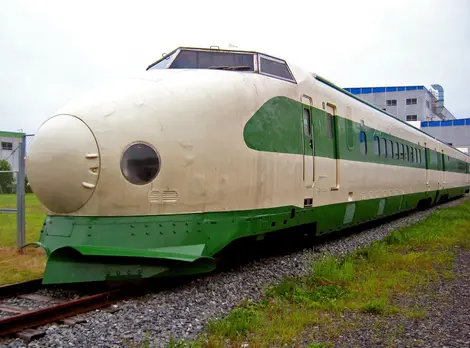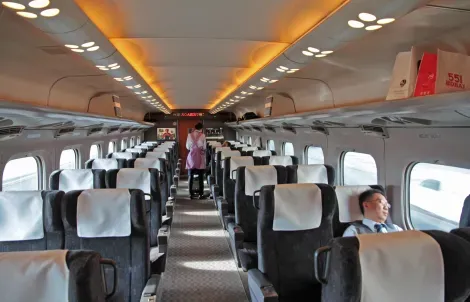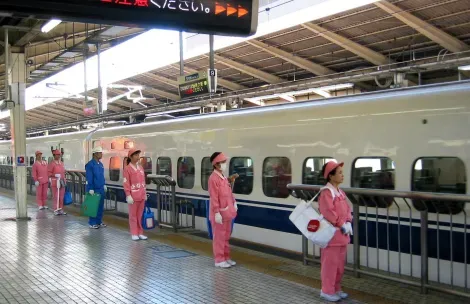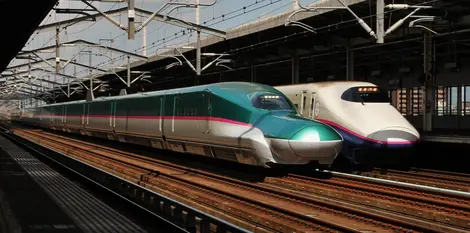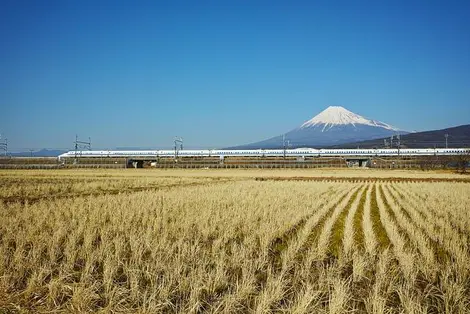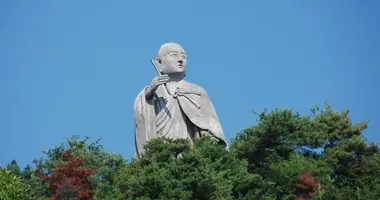The Shinkansen 新幹線
- Published on : 22/01/2018
- by : J.L.
- Youtube
The history of the bullet train
The Shinkansen is the great technological success of post-war Japan. The country has become a technological world leader with this high-speed train at the forefront of design, offering reliability, comfort and top-notch service since its introduction in 1964.
Shinkansen, the word for the Japanese high speed train, means "new inter-urban line". This is the founding principle of this high-speed train system, first introduced by the Japan National Railway (JNR) which later became JR (Japan Railway) in 1987.
The first projects
The idea of a train quickly connecting Tokyo to Osaka, two major Japanese cities, first came about in the late 1930s. It was called the Dangan project (dangan means bullet). The aim was making the journey in four hours, with an estimated speed of 200 km/h. But the Second World War put this project on hold.
In 1958, an express train was put into service between Tokyo and Osaka. The Business Tokkyu Kodama took 6 hours 50 minutes one-way, and was very successful. Engineers soon went back to work, to create the famous high-speed line we know today.
The Olympic Shinkansen
After years of tests and hard work, with the Olympic Games being held in Tokyo in 1964, the first high speed train line in the world was commissioned on October first of that year: the Tokaido Shinkansen.
It began with 14 roundtrips at 210 km/h, in Shinkansen series 0, between Tokyo and the new Shin-Osaka station. The success was enormous, with the whole world coming to admire this technological feat. Japan was no longer a country that imitated the technologies of others, but a land of innovation.
In 1972, the line was extended to Hiroshima, and in 1975 to Hakata (Fukuoka): it was named the Sanyo Shinkansen.
Extension continues
Japan continued to develop at great speed, with new projects continuing to be announced. The north became involved, with the Tohoku and Joetsu Shinkansen lines in 1982, which make their way to Morioka and Niigata with the Shinkansen 200 series.
But it wasn't until 1992 that a leap forward was made with the introduction of new equipment, the Shinkansen 300 series, which allowed a commercial speed of 270 km/h with the Nozomi service between Tokyo and Hakata (Fukuoka), reducing travel time yet again.
Lines continued to expand in northern Japan: to Yamagata in 1992, and Akita and Nagano in 1997. Each new line used specific train models. There was the series 400 (Yamagata), E1 (Joetsu), E2 (Tohoku, Nagano), E3 (Akita) and E4 (Joestu, Tohoku).
The 300 km/h bar
In 1997, the introduction of the powerful Shinkansen 500 series brought commercial speed to 300km/h, thanks to impressive technological advances. This meant it took only 2 hours 30 minutes to connect Tokyo with Shin-Osaka.
In 2004, a new line opened on the island of Kyushu. The Kyushu Shinkansen, with new 800 series trains, extended south to Kagoshima.
In 2015, the line to Nagano extended to Kanazawa, called the Hokuriku Shinkansen, with the E7 series train.
Hokkaido and beyond
In 2016, the Shinkansen finally arrived in Hokkaido, through the Seikan Tunnel to Hakodate. The E5 series trains that travel the whole line from Tokyo at a top speed of 320km/h, are currently the fastest in Japan. The very special design of this train, with its very long nose, means passenger's eardrums are not damaged when the train enters a tunnel, even at high speed. Further technological advances are also incorporated.
And extension projects continue, as the Shinkansen is planned to extend to Nagasaki (2022), Sapporo (2030) and to join Japan's Kanazawa-Kyoto Sea by 2030.
The world standard
Today, the Shinkansen lines extend a total of 2,765 km. In 2015, 360 million travelers had traveled by Shinkansen. And the key words of this system, still recognized around the world: punctuality, comfort and safety. No accidents have occurred during normal operation of the trains. The introduction of the Gran Class in the latest JR East models of make the trip a real pleasure, especially with such high quality service on board. In each Shinkansen, a host or hostess passes by to offer you drinks, snacks and bento.
Related: Ekiben, the train bento
Your seat is always turned to face the direction of travel, but you can rotate it if you wish. The trains are clean thanks to a fast and efficient cleaning service upon arrival at the terminus. Regarding punctuality, the figures are enviable: the average is 36 seconds late, for 120,000 trains per year!
More than half a century after its launch, the Shinkansen remains the world standard for high-speed trains.









